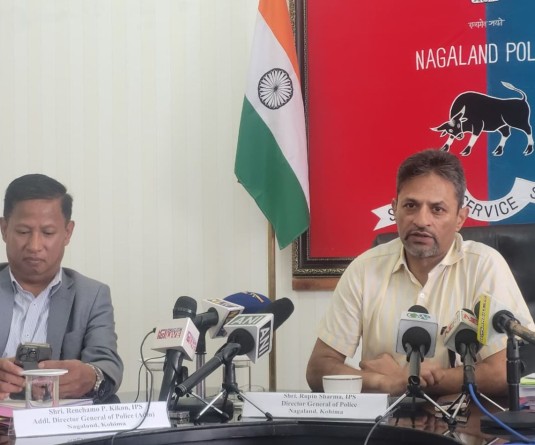Jasmina Zeliang, founder of Heirloom Naga and Cane Concepts during her presentation at Kairos, Dimapur on April 29. (Morung Photo)

Morung Express News
Dimapur | April 29
A one-day symposium based on the theme, ‘Sustainable Fashion in the context of Naga clothing and fashion industry,’ was organised at Kairos, Dimapur on April 29.
The event which also featured a fashion show during the evening, has been initiated by Bond J Artistry, a group formed by designer Bambi Kevichusa, fashion model Opang Jamir Metsubo and Piano maestro Nise Meruno.
Jasmina Zeliang, founder of Heirloom Naga and Cane Concepts, spoke on ‘Scope of indigenous textiles and fashion in the global market; strategies for marketing.’ She mentioned that textiles are a crucial ingredient for the handmade industry which provides the second largest employment in the country. It has been an intrinsic part of Indian history dating back to 4000 BC.
In the 2019-20, All India Handloom Census, it stated that out 31.45 lakh weavers, women constituted more than 70%. The North-East region constituted 50% of all the weavers in the country, she said.
Not far behind, Nagaland has a total of 33,846 women weavers in the state as well. As such, it was crucial to facilitate the indigenous farmers and strengthen the fragmented value chains, she added.
This she said, ‘could be done by investing in appropriate yarn, design and product; entrepreneurship, research and development, dyeing, washing, marketing, packaging, export procedures and documentation, complains etc. Besides these points, instilling pride in weaving should be further encouraged especially for the younger generation in moving forward.’
Aligning with the right markets was also a crucial element in helping the weaving industry grow in the state, she noted. In turn it would help in bringing clients from outside who are interested to collaborate with the local entrepreneurs and producers.
In regard to the handloom sector with its methods of weaving & dyeing has almost zero carbon footprint she stated. At the same time however, the fashion industry as a whole, accounts for about 10% of all global emissions and 20% of all fresh water pollution is via textiles treatment and dyeing methods.
Ninoto Nagami, meanwhile gave a theoretical overview of the different dyes and fabrics in usage by the different villages in Nagaland, during his presentation on “Naga indigenous fibres and dyes; and how designers can use them in contemporary clothing.”
A short pre-recorded video prepared by Theyie Keditsu on ‘Reduce, Reuse and Recycle’ was also played during the seminar.
The event saw the turn-up of young students and indigenous fashion enthusiasts who were in attendance for the various presentations.




